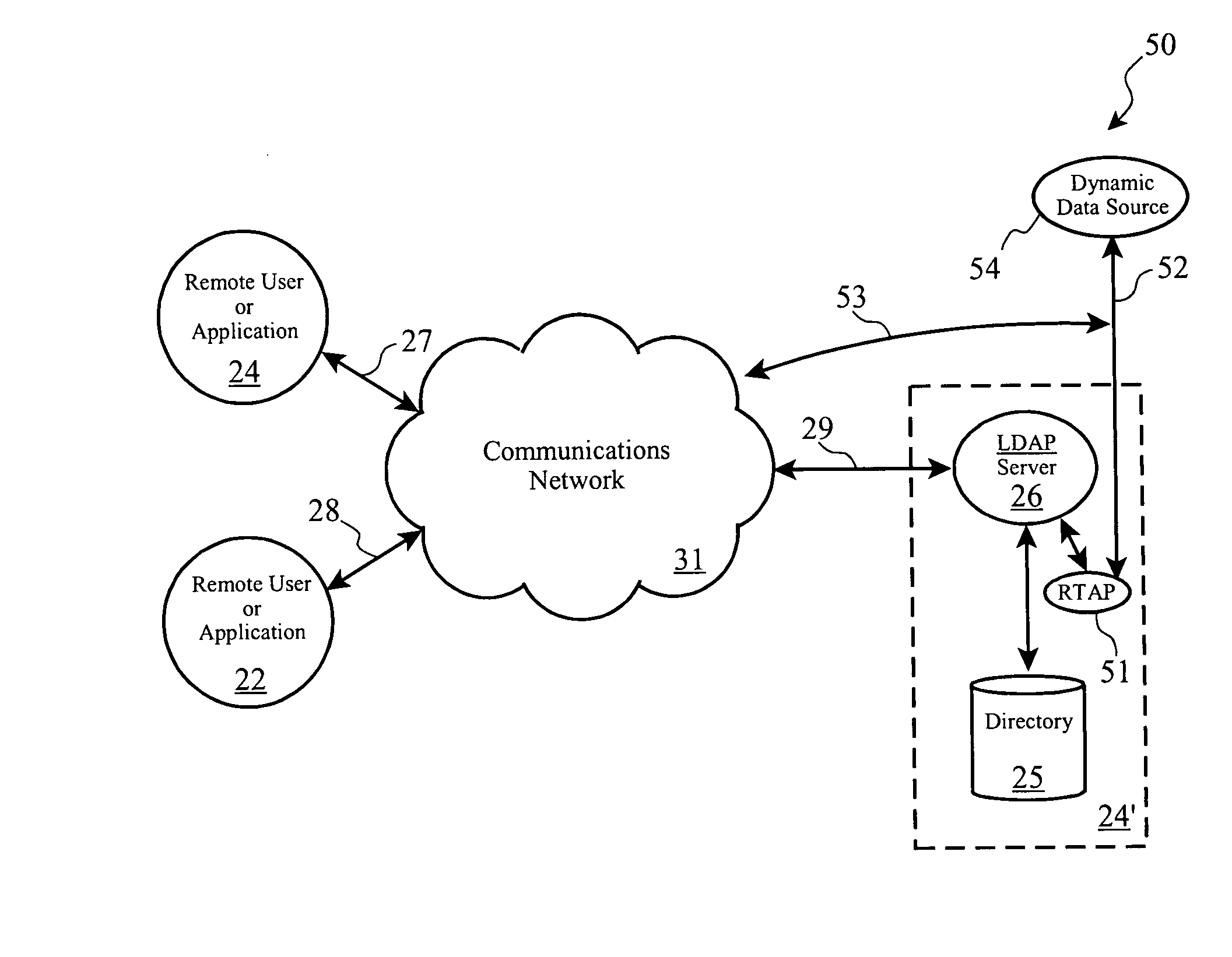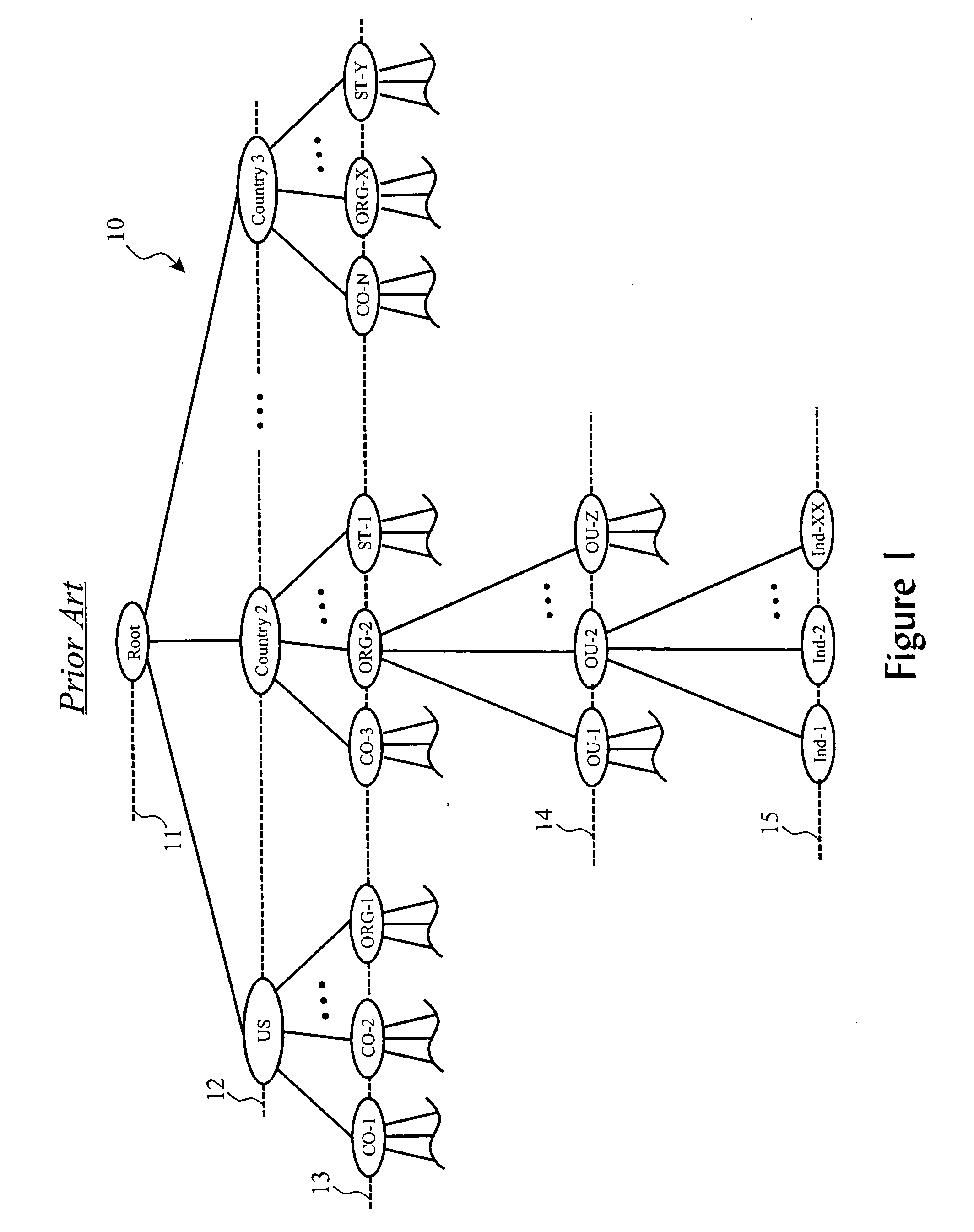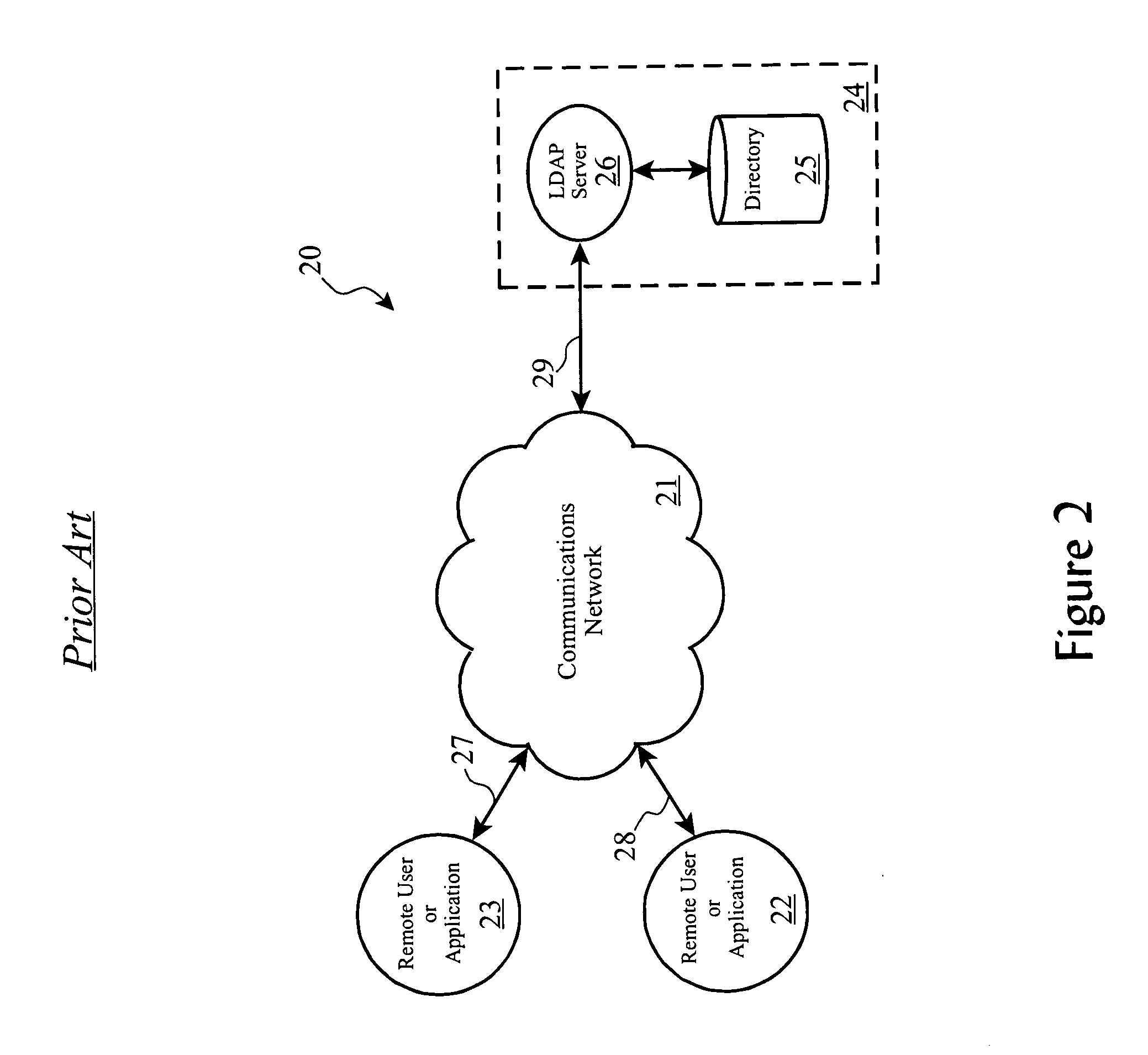Real-time attribute processor and syntax schema for directory access protocol services
- Summary
- Abstract
- Description
- Claims
- Application Information
AI Technical Summary
Benefits of technology
Problems solved by technology
Method used
Image
Examples
Embodiment Construction
[0065] The present invention, referred to as a “Real-time Attribute Processor” (“RTAP”), handles dynamic data for directory services which are optimized for relatively static data, such as Lightweight Directory Access Protocol (“LDAP”). There are a number of directory access protocols and products which either provide similar functionality as LDAP, or which incorporate or are compliant with LDAP, including but not limited to X.500 DAP (previously described), Netscape's Communicator suite of products, Microsoft's Active Directory and a number of their products including Outlook Express, Novell's NetWare Directory Services, and a number of networking products from Cisco Systems. In the following paragraphs, we will provide several example embodiments including circuits, computing platforms, programming methodologies, and directory services servers. The logic of the invention may be realized in electronic circuitry, such as in Application Specific Integrated Circuits or programmable lo...
PUM
 Login to View More
Login to View More Abstract
Description
Claims
Application Information
 Login to View More
Login to View More - R&D
- Intellectual Property
- Life Sciences
- Materials
- Tech Scout
- Unparalleled Data Quality
- Higher Quality Content
- 60% Fewer Hallucinations
Browse by: Latest US Patents, China's latest patents, Technical Efficacy Thesaurus, Application Domain, Technology Topic, Popular Technical Reports.
© 2025 PatSnap. All rights reserved.Legal|Privacy policy|Modern Slavery Act Transparency Statement|Sitemap|About US| Contact US: help@patsnap.com



